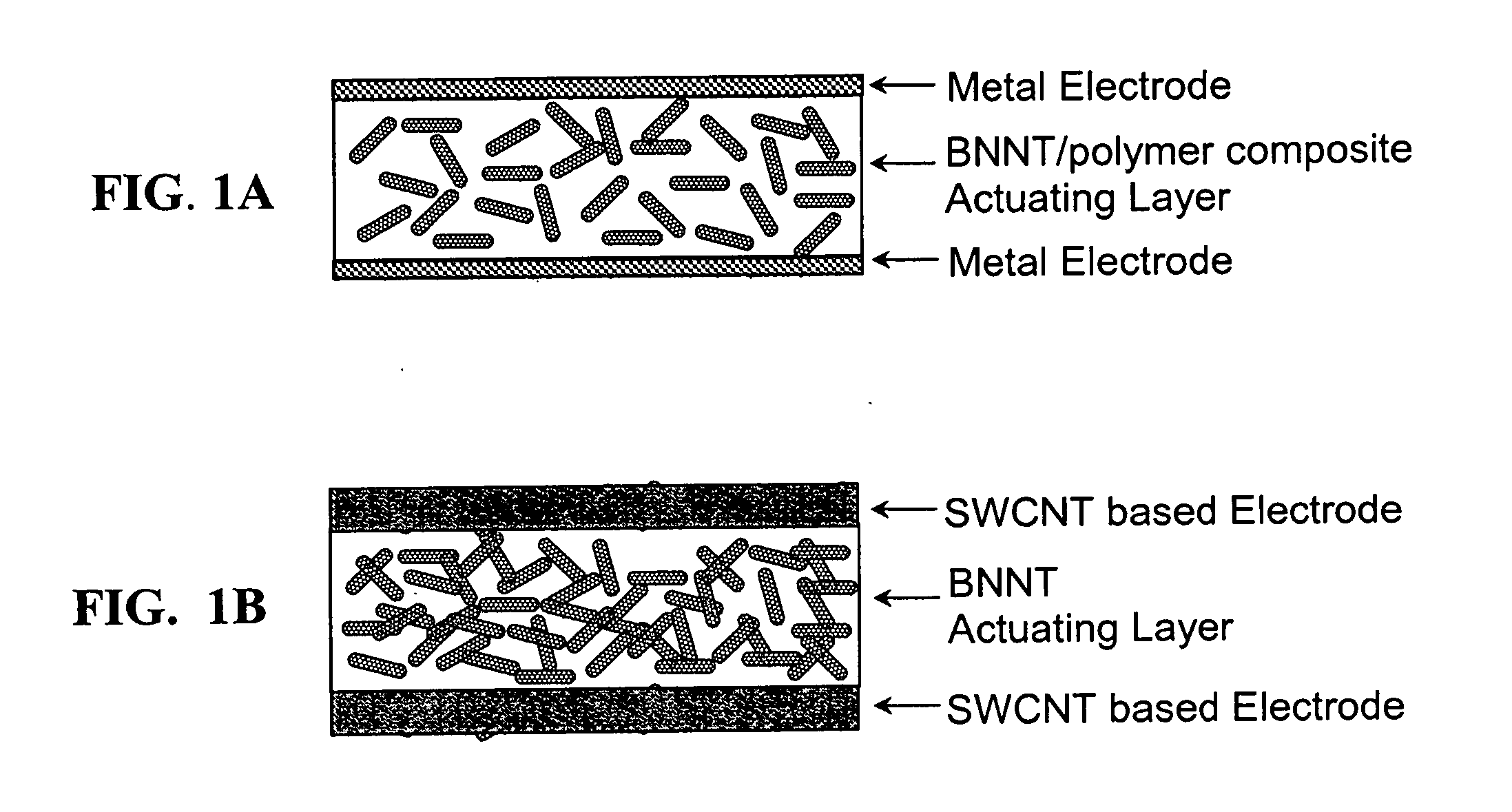Energy conversion materials fabricated with boron nitride nanotubes (BNNTs) and BNNT polymer composites
a technology of boron nitride nanotubes and composite materials, which is applied in the direction of piezoelectric/electrostrictive device material selection, device material selection, material nanotechnology, etc., can solve the problems of poor mechanical properties, low electroactive coefficient, and high toxicity
- Summary
- Abstract
- Description
- Claims
- Application Information
AI Technical Summary
Benefits of technology
Problems solved by technology
Method used
Image
Examples
Embodiment Construction
[0027]The following detailed description is of the best presently contemplated mode of carrying out the invention. This description is not to be taken in a limiting sense, but is made merely for the purpose of illustrating general principles of embodiments of the invention.
[0028]Since the first theoretical prediction of the existence of boron nitride nanotubes (BNNTs) in 1994 and the first experimentally synthesized BNNT report by Zettl's group in 1995, several types of BNNT synthesis methods have been reported. Recently, a new and conceptually simple method of producing extraordinarily long, highly crystalline BNNTs was demonstrated. BNNTs are thought to possess high strength-to-weight ratio, high thermal stability (up to about 800° C. in air), piezoelectricity, and radiation shielding capabilities. Nakhmanson's theoretical analysis predicted that the piezoelectric coefficient of BNNTs can be higher than that of poly(vinylidene fluoride) (PVDF) or poly(vinylidene fluoride-trifluoro...
PUM
| Property | Measurement | Unit |
|---|---|---|
| Percent by mass | aaaaa | aaaaa |
| Percent by mass | aaaaa | aaaaa |
| Temperature | aaaaa | aaaaa |
Abstract
Description
Claims
Application Information
 Login to View More
Login to View More - R&D
- Intellectual Property
- Life Sciences
- Materials
- Tech Scout
- Unparalleled Data Quality
- Higher Quality Content
- 60% Fewer Hallucinations
Browse by: Latest US Patents, China's latest patents, Technical Efficacy Thesaurus, Application Domain, Technology Topic, Popular Technical Reports.
© 2025 PatSnap. All rights reserved.Legal|Privacy policy|Modern Slavery Act Transparency Statement|Sitemap|About US| Contact US: help@patsnap.com



